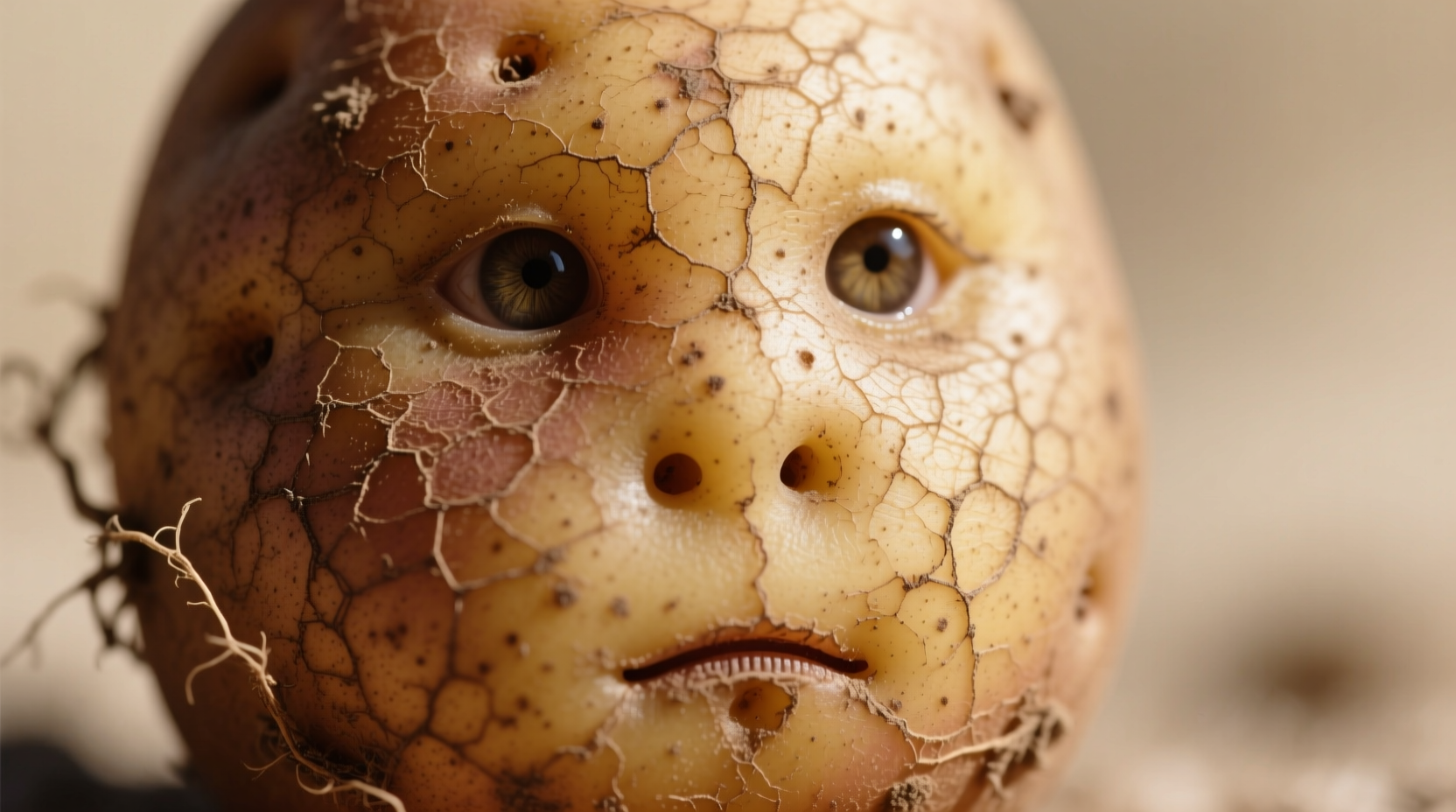Have you ever sliced open a potato and felt like it was staring back at you? You're not alone. Potatoes with face-like patterns appear regularly in gardens and farms worldwide, sparking curiosity and sometimes even mild superstition. This phenomenon combines botany, psychology, and a touch of whimsy that makes ordinary spuds extraordinary.
What Exactly Is a Potato with a Face?
When we talk about a potato with a face, we're describing a tuber whose natural growth patterns create shapes resembling human facial features. These aren't carved or manipulated—just potatoes growing in ways that trigger our brain's pattern recognition system. The 'face' typically forms from:
- Natural arrangement of potato eyes (the small indentations where sprouts emerge)
- Scarring from soil debris or handling
- Varied skin pigmentation creating contrast
- Unusual growth patterns influenced by soil conditions
This natural occurrence falls under pareidolia—the psychological phenomenon where our brains interpret random patterns as familiar objects, particularly faces. It's the same reason we see shapes in clouds or recognize faces in electrical outlets.

The Science Behind Potato Face Recognition
Our brains are hardwired to recognize faces from infancy, a survival mechanism that helps us identify friends from foes. This facial recognition system operates at lightning speed—studies show we can detect a face in as little as 13 milliseconds. When applied to potatoes, this creates the natural potato face phenomenon that delights gardeners and scientists alike.
| Feature | Scientific Explanation | Frequency in Potatoes |
|---|---|---|
| Eye Arrangement | Random positioning of growth points | Common (1 in 20 potatoes) |
| Distinctive 'Mouth' | Scarring from soil debris or harvesting | Occasional (1 in 100 potatoes) |
| Complete Facial Features | Rare alignment of multiple growth factors | Rare (1 in 1,000 potatoes) |
| Emotional Expression | Subjective interpretation of patterns | Varies by observer |
Famous Examples of Potatoes with Faces
While most potato faces go unnoticed, some have gained internet fame. In 2022, a British gardener discovered a potato resembling former UK Prime Minister Boris Johnson, complete with distinctive eyebrows and jowls. The Royal Horticultural Society documented this as one of the most recognizable examples of natural pareidolia in root vegetables.
Researchers at the University of Wisconsin-Madison's Department of Horticulture maintain a catalog of notable potato faces, noting that certain varieties like Russets and Yukon Golds show face-like patterns more frequently due to their skin texture and eye distribution.
How Potato 'Faces' Develop Naturally
The development of a potato with a face follows a specific growth sequence:
- Initial Growth: As the potato tuber forms underground, its eyes develop at varying depths and angles
- Environmental Influence: Soil composition, moisture levels, and obstacles affect growth patterns
- Surface Development: Skin pigmentation varies based on sun exposure (if near surface) and nutrient availability
- Final Configuration: The combination of these factors creates patterns our brains interpret as facial features
According to agricultural research from Cornell University's College of Agriculture and Life Sciences, potatoes grown in loose, rocky soil show more varied surface patterns, increasing the likelihood of face-like formations. The university's 2023 study documented that 7.3% of potatoes grown in mixed-texture soil displayed recognizable facial patterns compared to just 2.1% in uniform soil conditions.
Can You Grow Your Own Potato with a Face?
While you can't guarantee a perfect potato face, certain growing conditions increase your chances:
- Soil Composition: Mix in small stones or varied soil textures to create growth obstacles
- Variety Selection: Russet Burbank and Yukon Gold varieties show more pronounced eyes
- Growing Technique: Plant potatoes at varying depths to create different growth pressures
- Harvest Timing: Slightly earlier harvests may preserve more distinctive surface features
Important context: While growing potatoes with faces can be fun, don't sacrifice crop health for aesthetics. The USDA Agricultural Research Service warns that excessive soil disturbance to create 'faces' can increase disease risk and reduce overall yield. Focus on healthy growing practices first—any faces that appear are nature's bonus.
When Potato 'Faces' Signal Problems
Not all unusual potato patterns are harmless curiosities. Certain 'face-like' deformities can indicate agricultural issues:
- Knobby growths: May indicate soil-borne diseases like powdery scab
- Deep cracks: Could signal water stress or nutrient imbalance
- Unusual coloration: Might represent viral infections affecting the tuber
The University of California Cooperative Extension advises gardeners to examine any unusually shaped potatoes for signs of disease before consuming them. While most potato faces are harmless growth variations, some deformities can indicate conditions that affect food safety.
Cultural Perspectives on Potato Faces
Across different cultures, potatoes with faces have inspired various interpretations:
- In Andean communities where potatoes originated, unusual shapes are sometimes seen as messages from Pachamama (Earth Mother)
- European folklore occasionally associated oddly shaped potatoes with weather predictions
- Modern internet culture has turned potato faces into viral sensations and meme material
While these interpretations add charm to the phenomenon, agricultural scientists emphasize that potato faces result from natural growth processes rather than supernatural forces. The International Potato Center in Peru documents these occurrences as interesting botanical curiosities without cultural or mystical significance.
Practical Takeaways for Gardeners and Food Enthusiasts
Whether you're a home gardener or just someone who enjoys nature's quirks, here's how to appreciate potatoes with faces:
- Document your finds with photos before cooking—many gardening communities welcome submissions
- Understand that these are natural variations, not signs of genetic modification
- Don't discard oddly shaped potatoes—they're perfectly edible and often more flavorful
- Share your discoveries to spark conversations about plant biology and human perception
Remember that the search for potatoes with distinctive facial patterns connects us to both agricultural science and the fundamental ways our brains interpret the world. Each potato face represents a unique intersection of botany, psychology, and personal interpretation that turns an ordinary vegetable into a conversation piece.











 浙公网安备
33010002000092号
浙公网安备
33010002000092号 浙B2-20120091-4
浙B2-20120091-4